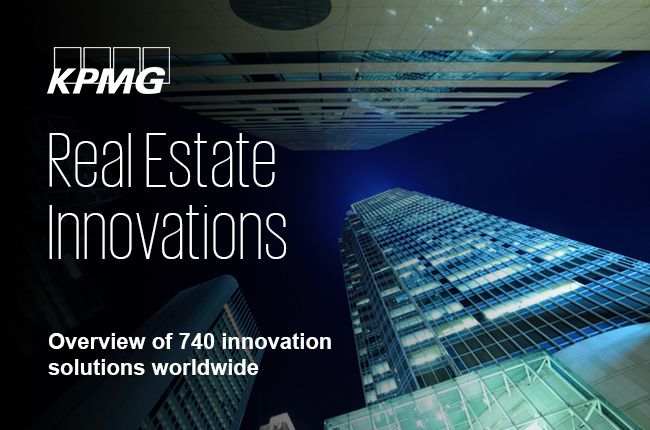Real Estate Innovations
Real Estate Innovations
An overview of 740 innovation solutions worldwide
Innovation is essential. The need for the Real Estate and Construction industry to embrace innovation in long term business strategies is inevitable.
In this 255-page document, we provide insights into the current innovative developments in the Real Estate and Construction industry: what is going on in the world of innovation, what trends are driving change and how can innovation be of real added value to business. In the first section of this overview, we elaborate on the key success factors for leveraging innovation and the way in which KPMG can support Real Estate and Construction companies and society in doing so.
Subsequently, we show the important innovative trends in the Real Estate and Construction sector and showcase various practical examples of innovation solutions. The central part of this publication is our structured list of 740 innovations, including key company info and characteristics such as the position in the Real Estate value chain and the respective field of expertise of a company. In the final section, we provide insights into several PropTech Ecosystems around the globe that contributed to the realization of this publication.
We are confident that this will be an insightful read for you. Download the report.
A bird’s eye perspective on post-Covid-19 recovery in the international Real Estate market:
2.8x
Pandemic drove down office use by 2,8x while office use for collaboration was up by 15%
23.3b USD
An estimated 23.3 billion USD was invested into PropTechs during 2020
183.8b USD
In the first quarter of 2021, global Real Estate transaction volumes totaled an estimated 183.8 billion USD
2.9%
Despite a mid-year dip, global rent levels increased through year-end 2020 and ended with a full year increase of 2.9%
54%
of the Real Estate industry believes Covid-19 is forcing sustainability considerations up the agenda
88%
of the Real Estate industry believes Covid-19 has encouraged interest in flexible office concepts and new business models
This report classifies innovation into nine categories:
In this 255-page document, we examined the current innovative developments in the Real Estate and Construction industry: what is going on in the world of innovation, what trends are driving change and how can innovation be of real added value to business. We invite you to download this insightful report and encourage you to contact us to learn more.
Click the link or image below to download the full report.
Are you interested in learning more?
Browse our library on topics related to Vietnam economy as well as articles related to Thought Leadership and Technical Updates
Alternatively, you may explore our list of upcoming OnDemand training courses.



